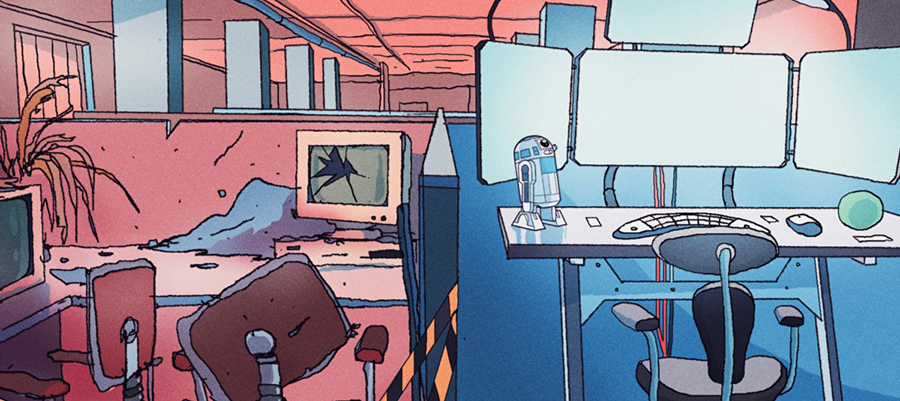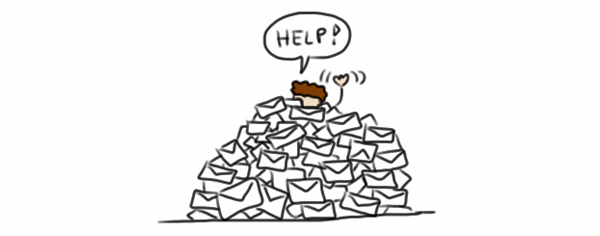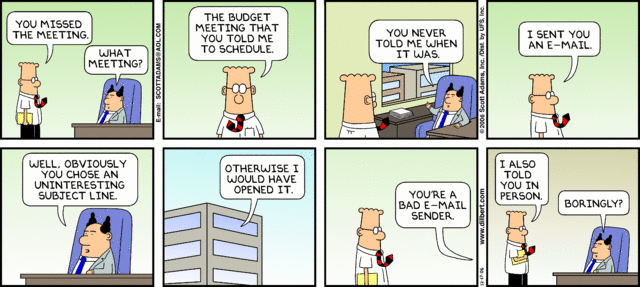
Take a few moments to think about how you manage your time. Ask yourself are you wasting time on seemingly useless tasks? Because there is a strong chance you do. Unfortunately, everyone shares this problem with you.
Try figuring out what distracts you the most during an ordinary workday.
If you don't know the answer, let us give you a hint... It can sound like a ding, or vibration on the phone we feel from the pocket. Yes, we are talking about email!
That's the thing that keeps us glued to our phones and computers. What more, there are billions of emails are sent every day and by the end of 2019, the number of sent emails is expected to reach 246 billion.

This is exactly why those who still use email for team or management communication and collaboration should think twice about this flawed communication habit. Especially if you are using it for internal communication. Therefore, if you are struggling to effectively communicate with your team or management, you should consider trying something different.
Here are 5 reasons why you should stop using email for internal communication.
1. We are all drowning in emails

People all around the world are using emails to communicate literally everything. They send promotional emails. They use them for project management and task organization. They use it for document sharing, client communication, and event organization. They rely on emails both for personal use and for business correspondence, for team building activities and fun.
The bad news is that this approach is both outdated and wrong.
The Radicati Group survey revealed that an average office worker receives 121 emails a day and sends around 40 business emails daily. This basically means that the average employee inbox is packed with unnecessary emails. On average, 11 percent of email is personal, non-work related, while 7 percent of emails inside the average inbox of each person is considered to be spam or junk.
Simply put, companies that keep using email communication for anything and everything are at risk of making their employees stressed out and less productive.
2. Sometimes messages get lost

Unfortunately, email literacy is still an issue for many people. Instead of writing emails where the message is precise and designed for better understanding and reading, many people are still using a conversational tone without proper interpunction or document/content design. Such emails are impossible to be skimmed at and the message gets lost in a ton of disorganized content.
When receiving such an email, most of us need more time to decode the message before we hit the reply button. And sometimes we don't reply at all.
10 years ago, employees spent an average of 16 minutes refocusing on their work after reading emails. But 10 years ago, fewer emails were sent on a daily basis.
3. Bulks of emails cause stress
Email is a symbol of stress. Constant email notifications are a toxic source of stress. Continuously checking and reading emails due to pushing notifications on mobile phones or watches are provoking tension and worry. Moreover, email is distracting people from recognizing other sources of overload or stress in their work lives. The inbox itself is becoming the stress symbol.
Research from 2013 concluded that almost 92% of employees show elevated blood pressure and heart rate when handling emails at work. A burst of anxiety is the result of seeing hundreds of unread emails in their inbox, where each message demands more of their time and decision.
Employees who feel like they don't have control over their work schedule or entire workdays are not satisfied employees. This translates into bad decision-making, less productivity and focus, and average results. High levels of stress are in direct correlation with lower performance, which is exactly why companies should think twice about implementing a centralized communication channel to handle all internal correspondence properly.

4. The email threads are too noisy
You know how sometimes you get back from a quick break only to jump into the conversation thread that’s now 15 messages long? It’s annoying, right? And it takes much of your time to go through all the messages to be able to find those that in fact are directed to you or your tasks.
So, instead of focusing on the priority tasks, you are spending time deciding which of the email messages are important. Unfo5rtunately, when the email is the default communication medium in a company, long threaded email conversations become the norm for passing down the information to other people.

The result?
Email communication can be complex and can cause misinterpretation of the message. Moreover, emotionally-driven emails complicate the message and if stressed, there is a high chance you will not be able to discern between important, less important, and not important email messages.
5. Instant response is a must
Email communication can be demanding. People can be anxious and impatient, and more often than not you will be asked why aren't you replying. This is because every person believes that their message is the most important one you are going to receive, and they expect and demand an instant response.
Now when we can check our emails on mobile devices, the demand for an instant reply is growing even more. Furthermore, in some companies employees are expected to respond to emails right away, because instant replies are a part of their company culture.
Another big problem is the fact that many employees check their emails long after their working hours. In 2014, 38% of employees routinely check work email at the dinner table and 69% won't even go to bed without first checking their email.

Conclusion
Email is not only controlling your time at work, but it’s also controlling your life. So, you must take control of it ASAP!
Email still has an important place in the business world, but problems arise when the email is understood as a solution for everything. There are better creative alternatives to email that can help you improve internal communication and company culture. If you want to communicate more clearly, better prioritize your workday, and enhance relationships, email is not an option.
When you opt for the internal blog over traditional emailing, you’re not just keeping up with the latest trends, but you’re giving yourself back the time every day and making sure each team member is getting the message faster. The internal blog can help you create a more instantly-collaborative experience. Thus, try our internal blog and learn how you can cut down on unnecessary tasks.
